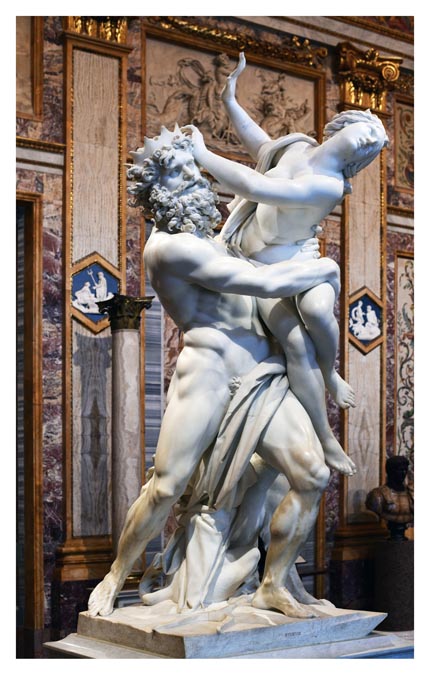
Oh, how delightful it would be, to spend this week in Rome and take a picnic lunch to the Villa Borghese grounds. Italian ripe tomatoes, fresh cheeses, out of the oven crusty breads, and desserts, Italian style.
To walk up the Spanish Steps first and then proceed to this place of serenity and beauty. Let us take a look back and bear witness to an excitement hard to conceive today. I have read recently that visitors are no longer to sit and linger on the Spanish Steps! What a world it has become.
The Borghese family originated in Sienna, Italy. They began to acquire importance in that city in mid-12th Century. Some of the members were appointed to high public office. In the 1500s Marcantonio I Borghese moved to Rome and married Flaminia Astalli thus allying himself with one of the important families of Roman aristocracy. His son Camillo became Pope in 1605 with the name of Paul V.

In 1605 the old vineyard near MuroTorto, owned by Pope Paul V, was the first nucleus of the villa. Assigning the supervision to architect Flaminio Ponzio. Paul V greatly contributed paintings and sculptures. According to the Pope’s will, the property was granted freshwater from Acqua Felice aqueduct.
This turning a former vineyard into the most exclusive garden built in Rome since Antiquity were long informally open. Gardens were given to the public in 1903. This Pincio of ancient Rome in the south part of the park offers one of the greatest views over Rome.
It is because of the great number of contemporary documents that we are able to follow construction of the villa. Pay orders prove the involvement of artists Oietro Bernini and others. The sculptures collection was enriched by pieces coming from Saint Peter, donated by the Pope during the construction of the façade.
There were the secret gardens which were bounded by high walls and which protected the flowers, exotic plants, and citruses, inside from the cold Winter winds. Cottages were used as shelters for exotic animals including lions, hares, roebucks, peacocks, ducks, and ostriches. The property remained unchanged for a century after its construction. At the end of the 18th Century it was restored and renovated to respond to the taste of the times.
Cardinal Scipione Borghese was not only very good at collecting works of art, he was ruthless at it. Raffaello’s Deposizione, for example, came into his hands in 1608. It had been stolen from the Baglioni chapel in Perugia, as ordered by the Pope.
The beautiful sister of Napoleon, Paolina Borghese, was Camillo Borghese’s wife. She would model for Canova’s statues with very little clothes on and when the gossips attacked her, she replied “Why should I wear many clothes? His studio is heated.”
The Villa Borghese was built with the purpose to be host to the art collections. Sculptures from the First Century A.D. and precious paintings from 1400-1600 comprise the majority of the paintings in this collection. The religious genre strongly characterizes Roman culture. Religious devotion was characterized as the main source of inspiration as well as the sole purpose of many artistic activities.
The Piazza di Siena, in the villa, was host to the equestrian dressage, individual jumping of the event competition for the 1960 Summer Olympic Games.
In 2004 a species of Italian snail was discovered still living on the balustrade after more than 100 years of being transported to England. The gardens are described in, and the setting for, Chapters 8-11 of Nathaniel Hawthorne’s novel The Marble Faun.
And thus we pack up the wicker picnic basket loaned to us by the Hotel Aldovendi Villa Borghese and take a leisurely walk to always remember this pictorial historic afternoon in Rome.

